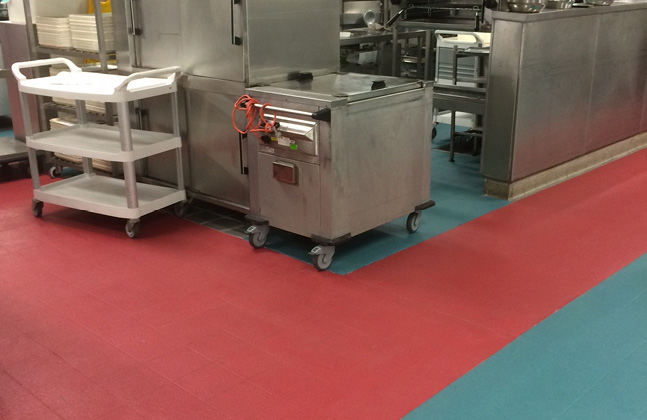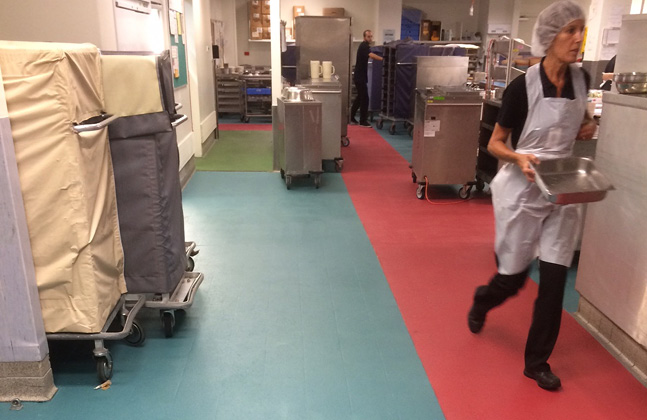The short answer to this question is yes – but you probably wouldn’t want to.
Installing a resin floor finish on top of tiles can lead to a variety of problems, in large part because of the joints and the possibility of the tiles moving underneath the new resin surface.
The joints are an unavoidable weak point in the floor, which means that a resin finish can crack along these lines relatively easily if subjected to pressure or impacts. It is also common for the profile of the grouting to show through the resin, meaning that the end result will have a patchwork effect instead of being level and consistent.
If the floor is exposed to thermal shock, from steam cleaning or blasts of hot air out of an oven for example, then this could cause the tiles to move – therefore even if the resin finish is itself resistant to thermal shock it could be cracked or undermined by the shifting tiles below it.
Some resin floors, especially polyurethanes, contract during the curing process. On a well-prepped and primed substrate this is rarely a cause for concern, however it could break a tiled floor, which would subsequently affect the quality of the completed surface.
Why do some people leave the tiles down?
The main reason why resin might be laid on top of tiles is time. Taking up the tiles is labour intensive, and once this is done the substrate will need to be prepared so that it can bond with the resin finish.
Additionally, the process of scraping the tiles off the floor can damage the underlying screed and repairing it will incur more time and expense, which can make some facilities managers reticent about going down this route.
How is resin installed on tiles?
If you decide to leave the tiles in place then they will need to be treated, much like the concrete substrate would, to receive the resin flooring material. Heavy shot blasting or diamond grinding is required to roughen up the tile’s surface of the tiles to enable them to bond with the new floor finish. Vitrified tiles may need to be shot blasted twice due to their exceptionally tough exterior.
A primer appropriate for the resin finish will then need to be applied before the coating goes down. This will either be a water-based primer for epoxy and polyurethane systems or a ceramic primer for methyl methacrylate floors.
A scratch coat will also be needed to help resolve the issue of joint lines showing though the resin. This will smooth over the grouting so that it won’t reveal itself too badly after the new coating has gone down.
What’s the best answer?
The best answer therefore when considering whether or not to apply resin on tiles is to choose the more labour intensive but definitely more successful option of taking up the tiles and installing the resin onto a properly prepared substrate instead.
In the next technical bulletin Gary Chapman, Flowcrete UK’s Technical Advisor, examines the problems with laying self-levelling floors to a fall. If you’ve got a question about resin flooring that you’d like answered by one of our experts, just leave it in the comments section below.






